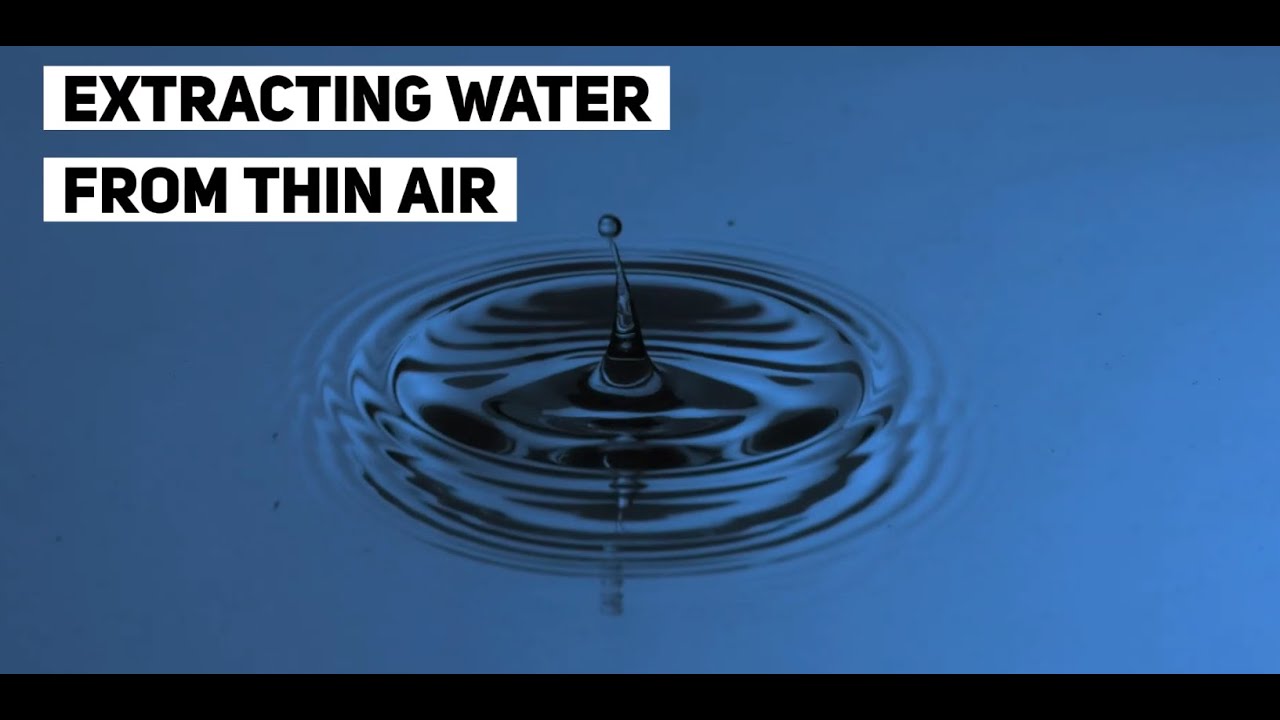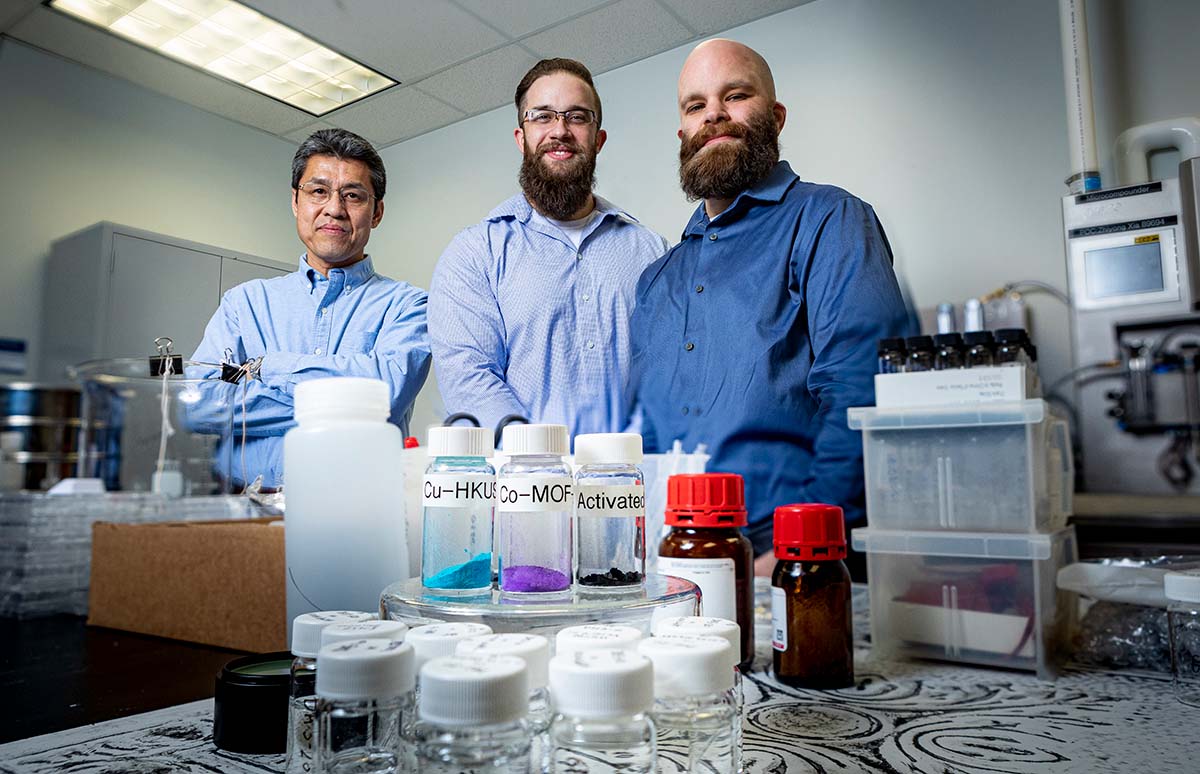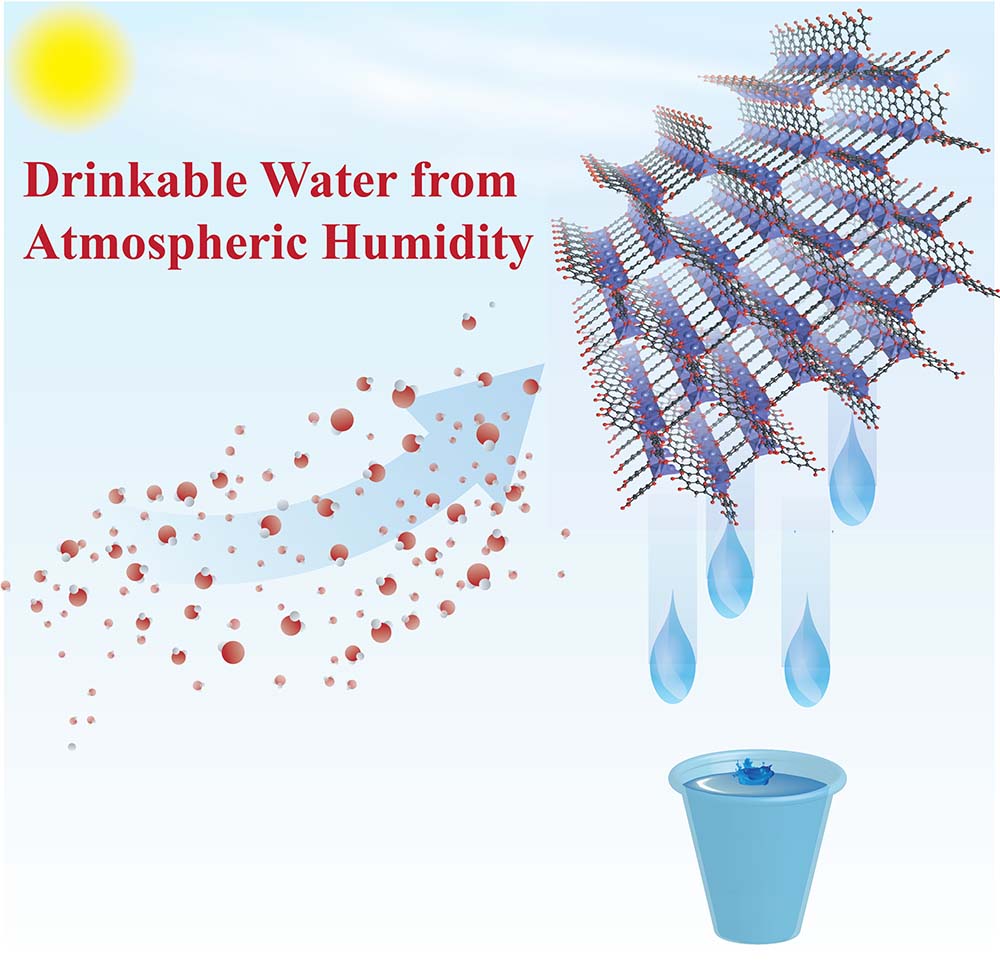Press Release
Saving the Planet, One Drop at a Time
Johns Hopkins APL Researchers Develop Method to Extract Water From Thin Air
For many of the world’s poor, one of the greatest environmental threats to health remains lack of access to safe water. Scientists at the Johns Hopkins Applied Physics Laboratory (APL), in Laurel, Maryland, have identified highly absorbent materials that can extract drinkable water out of thin air — which could potentially lead to technologies that supply potable water in the driest areas on the planet.
The researchers — a team from APL’s Research and Exploratory Development Department led by Zhiyong Xia, Matthew Logan and Spencer Langevin — describe their discovery in the Jan. 30 issue of Scientific Reports, a journal of the Nature Research family.
Their research leverages metal-organic frameworks (MOFs), an amazing next-generation material that has the largest known surface areas per gram — a single gram of the MOF can soak up a football field’s worth of material, if the material were laid in a single layer across the field. The sponge-like crystals can be used to capture, store and release chemical compounds — like water — and the large surface area offers more space for chemical reactions and adsorption of molecules.
MOFs have shown promise for water harvesting, but little research has been done to determine the best properties for fast and efficient production of water.
“Initial experiments have proved that the concept can work,” says Xia. “But the problem has been capacity. Other research teams have been able to produce as much as about 1.3 liters of water per day per kilogram of sorbent under arid conditions — enough only for one person. To create an optimal water-harvesting device requires a better understanding of the structure property relationship controlling absorption and delivery.”


